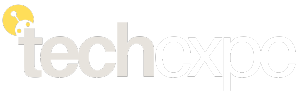1. Firewall Solutions: The First Line of Defense
Firewalls remain essential for protecting business networks from unauthorized access and cyber threats. Modern next-generation firewalls (NGFW) like Palo Alto Networks and Fortinet provide advanced threat detection, deep packet inspection, and application control. They prevent malware, ransomware, and phishing attacks from infiltrating company systems.
Key Features:
- Blocks unauthorized access and network intrusions
- Advanced threat detection and prevention
- Monitors and controls application traffic
2. Antivirus and Anti-Malware Software
Comprehensive antivirus and anti-malware solutions are critical for protecting endpoints. Tools like Bitdefender GravityZone, Norton Small Business, and Kaspersky Endpoint Security offer real-time protection against viruses, ransomware, spyware, and other malware, ensuring the safety of business devices.
Key Features:
- Real-time scanning and malware removal
- Multi-device protection for desktops, laptops, and servers
- Regular updates to defend against emerging threats
3. Endpoint Detection and Response (EDR)
EDR solutions such as CrowdStrike Falcon and SentinelOne provide advanced monitoring of all endpoints, detecting suspicious activity and responding to threats in real time. These tools are particularly useful for identifying sophisticated attacks, including zero-day exploits and insider threats.
Key Features:
- Continuous monitoring of endpoints
- Real-time threat detection and automated response
- Protection against advanced persistent threats (APTs)
4. Multi-Factor Authentication (MFA) Tools
MFA adds an extra layer of security to business accounts, making it harder for hackers to gain access even if passwords are compromised. Tools like Duo Security and Authy provide authentication through mobile apps, SMS codes, or biometric verification.
Key Features:
- Adds a secondary verification step
- Reduces risk of unauthorized access
- Supports multiple authentication methods
5. Virtual Private Network (VPN) Solutions
VPNs secure internet connections and encrypt data, especially for remote employees. Business VPNs like NordLayer, Perimeter 81, and Cisco AnyConnect help maintain privacy and protect sensitive business information from cybercriminals.
Key Features:
- Encrypts internet traffic to prevent data interception
- Secures remote access for employees
- Protects sensitive company communications
6. Security Information and Event Management (SIEM) Software
SIEM tools like Splunk and IBM QRadar collect and analyze security logs across the business network, helping identify suspicious activity and potential breaches. These tools enable proactive threat management and regulatory compliance.
Key Features:
- Centralized monitoring of security events
- Advanced analytics and threat detection
- Supports compliance and reporting
7. Backup and Disaster Recovery Solutions
Regular backups and disaster recovery software are essential for protecting data against ransomware, hardware failure, or accidental deletion. Tools like Veeam Backup & Replication and Acronis Cyber Backup provide secure, automated backups and rapid recovery options.
Key Features:
- Automated data backup and recovery
- Protection against ransomware and data loss
- Cloud and on-premises storage support
8. Email Security Tools
Email is one of the most common vectors for cyberattacks. Tools like Proofpoint, Mimecast, and Barracuda Email Security protect businesses from phishing, spam, and malicious attachments, ensuring safe communication across all email platforms.
Key Features:
- Blocks phishing attempts and malicious attachments
- Spam filtering and email threat analysis
- Protects sensitive information in email communication
9. Network Security Monitoring Tools
Network monitoring solutions like SolarWinds Network Security and Nagios track the health of networks, identify unusual activity, and prevent breaches. By continuously monitoring traffic, these tools help detect intrusions early and maintain network integrity.
Key Features:
- Continuous monitoring of network traffic
- Detection of unusual or malicious activity
- Alerts for immediate response to threats
10. Cloud Security Solutions
With many businesses moving to the cloud, tools like Microsoft Azure Security Center, McAfee Cloud Security, and Palo Alto Prisma Cloud are essential for protecting cloud applications, storage, and services. These tools ensure that cloud environments remain secure from cyberattacks and unauthorized access.
Key Features:
- Protects cloud-based applications and data
- Threat detection for cloud environments
- Compliance and risk management support
Conclusion
In 2025, businesses face an increasingly complex cybersecurity landscape, making it crucial to adopt a layered approach to security. By using the best tools and software—from firewalls and antivirus to SIEM and cloud security solutions—businesses can safeguard their digital assets against cyber threats. Implementing these cybersecurity practices ensures operational continuity, protects sensitive data, and reduces the risk of costly breaches.

